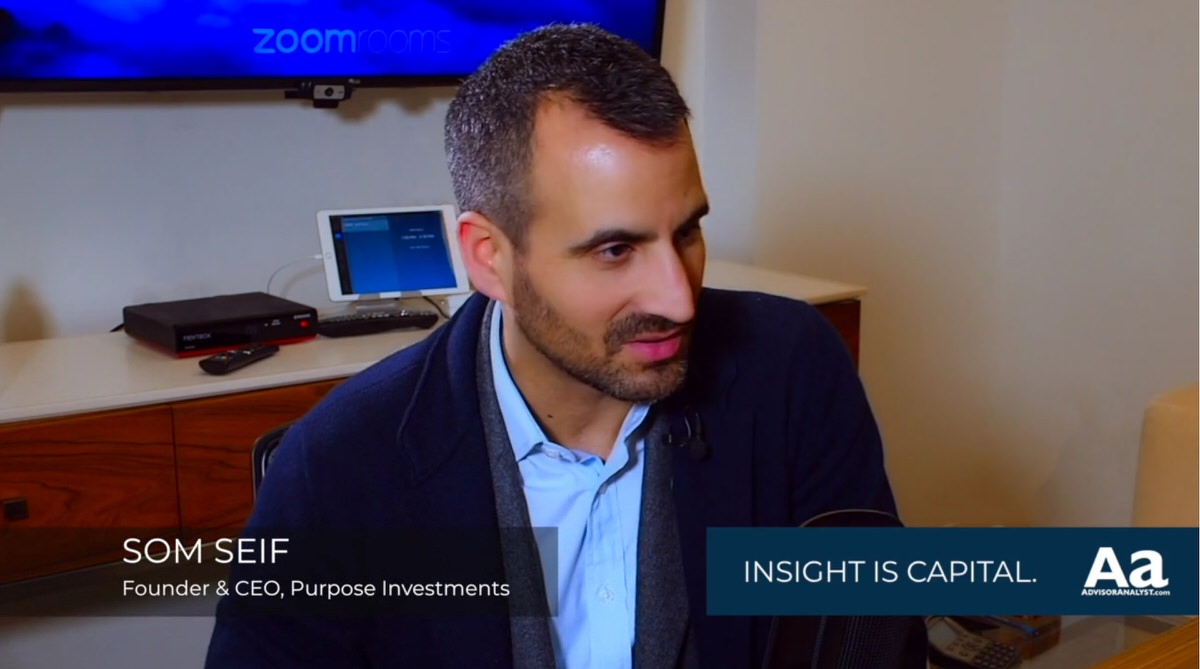by Matthew J. Moberg, CFA, Franklin Templeton Investments
We believe there is no greater force for driving growth and creating value in the economy than innovation. Start-ups, multinational corporations and companies of every size in-between trumpet their “innovative” products and services. They create “centres of innovation” and boast of the myriad ways in which they empower employees to think creatively and bring new ideas to the table.
The Pace of Disruption Is Increasing
In the investment landscape, the pace of disruption is increasing. Companies once considered highly attractive can suffer from disintermediation, their products or services rendered obsolete. Many industries are facing challenges. [backc url='https://www.fidelity.ca/onlyatfidelity/?utm_source=aa&utm_medium=ds&utm_content=ba_prCA_adv&utm_campaign=aa_cpm_en']
In transportation, cheaper and faster competitors are rethinking how we move people and goods, while in retail, online competition is driving prices down and curtailing pricing power for traditional brick-and-mortar businesses.
In manufacturing, companies are embracing digital solutions and data analytics and using robotics and artificial intelligence to create significant new efficiencies.
We see a number of structural impediments to strong gross domestic product (GDP) growth in the global economy, including high levels of debt across major economies, adverse demographics in developed markets, a lack of political will for serious structural reform, and rising geopolitical risk, just to name a few.
In this anticipated low and slow-growth environment, we believe investors will place a premium on companies that have “idiosyncratic growth drivers,” and the capacity to grow revenues and earnings—regardless of extant GDP growth—by addressing secular shifts in the way we interact with friends and family, shop and pay for goods and services, treat our illnesses, and spend our leisure time.
The Pace of Innovation Is Also Increasing
Innovation is pervasive and there have been significant breakthroughs in fields including biotechnology, robotics, artificial intelligence, fifth generation wireless technologies, 3D printing, autonomous vehicles, nanotechnology and more. Our team expects four platforms of growth to generate considerable economic value over the next five to ten years.
As we look to the future, we believe:
- Robotics could potentially transform the ways in which goods are manufactured.
- Gene sequencing and implantable devices will likely have a deep impact in the health care sector.
- Blockchain, virtual currencies and electronic payments should make transactions more secure and convenient.
- Autonomous driving, electric-powered vehicles and the sharing economy are likely to change not only how we move from place to place but how we consume energy and fuel.
In each of these industries, we can apply our time-tested expertise to seek out the innovations that we believe will offer long-duration growth prospects and the greatest investment opportunities.
We seek to invest in sustainable companies at the cutting edge of innovation. But with nearly every company touting its innovation credentials, how do we identify those companies that should truly be able to generate long-lasting growth?
Investing in Innovation Demands Active Management
Our ideation process is two-pronged. Thanks to our Silicon Valley location, we benefit from interacting with some of the world’s leading innovators. Our team is constantly reaching out to thought leaders across industries, reading, and meeting with trailblazing companies to understand cutting-edge technologies and ideas that could have transformative potential.
At the same time, our analysts are dedicated to fundamental stock research. Meticulous research helps us develop a deep understanding of the companies we look at.
Our analysts specialise by sector, which allows them to follow one to three related industries and cover approximately 50–70 stocks. They meet management, speak with customers, analyse the competitive environment, and become intimately acquainted with the products or services offered. Analysts also employ a variety of valuation methods to arrive at a target price. They look for companies with superior management, strong financials and sustainable competitive advantages.
In our view, it is difficult to screen for innovation. Historical and comparable valuation multiples may not be helpful. Selecting securities for an innovation-based portfolio requires an unorthodox approach. The team is likely to conduct additional research on companies that are trading above historical multiples rather than below, as the strategy seeks positive inflections, such as acceleration in earnings or price momentum.
In piecing together the mosaic that leads to an investment decision, we will look at factors suggesting a sustainable growth profile. These might include the pace of user adoption and the total addressable market for an innovative product or service. The combination of intense research with the ability to pursue themes in which we see opportunity is, in our opinion, the optimal strategy for pursuing long-term capital appreciation based on innovation.
We believe that only through active management is it possible to identify and capitalize upon these inflection points. Our experience as an active manager, with years of insight into the impact of innovation, gives us a leg up in identifying the companies that offer the most promising new products, processes and services, and weighting them appropriately in our portfolio given our evolving perception of reward/risk.
Innovation Is Everywhere
We believe that innovation is here to stay and should drive growth in the years to come. In the low and slow growth environment that we have experienced since the end of the Global Financial Crisis nearly a decade ago, there has been a premium on companies that benefit from idiosyncratic drivers of growth.
These companies cater to the evolving ways in which we shop, communicate, travel, experience technology and live our lives.
The comments, opinions and analyses expressed herein are for informational purposes only and should not be considered individual investment advice or recommendations to invest in any security or to adopt any investment strategy. Because market and economic conditions are subject to rapid change, comments, opinions and analyses are rendered as of the date of the posting and may change without notice. The material is not intended as a complete analysis of every material fact regarding any country, region, market, industry, investment or strategy.
The companies and case studies shown herein are used solely for illustrative purposes; any investment may or may not be currently held by any portfolio advised by Franklin Templeton Investments. The opinions are intended solely to provide insight into how securities are analyzed. The information provided is not a recommendation or individual investment advice for any particular security, strategy, or investment product and is not an indication of the trading intent of any Franklin Templeton managed portfolio. This is not a complete analysis of every material fact regarding any industry, security or investment and should not be viewed as an investment recommendation. This is intended to provide insight into the portfolio selection and research process. Factual statements are taken from sources considered reliable, but have not been independently verified for completeness or accuracy. These opinions may not be relied upon as investment advice or as an offer for any particular security. Past performance does not guarantee future results.
Data from third-party sources may have been used in the preparation of this material and Franklin Templeton Investments (“FTI”) has not independently verified, validated or audited such data. FTI accepts no liability whatsoever for any loss arising from use of this information and reliance upon the comments, opinions and analyses in the material is at the sole discretion of the user. Products, services and information may not be available in all jurisdictions and are offered by FTI affiliates and/or their distributors as local laws and regulations permit. Please consult your own professional adviser for further information on availability of products and services in your jurisdiction.
To get insights from Franklin Templeton delivered to your inbox, subscribe to the Beyond Bulls & Bears blog.
For timely investment updates, follow us on Twitter @FTI_Global and on LinkedIn.
*****
What Are the Risks?
All investments involve risks, including possible loss of principal. The value of investments can go down as well as up, and investors may not get back the full amount invested. Investments in fast-growing industries, including the technology and health care sectors (which have historically been volatile) could result in increased price fluctuation, especially over the short term, due to the rapid pace of product change and development and changes in government regulation of companies emphasising scientific or technological advancement or regulatory approval for new drugs and medical instruments. Small- and mid-capitalisation companies can be particularly sensitive to changing economic conditions, and their prospects for growth are less certain than those of larger, more established companies.
Copyright © Franklin Templeton Investments















